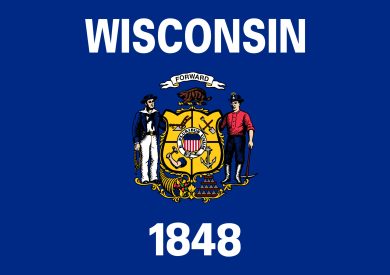
 Popular Cities For Lending in Wisconsin
Popular Cities For Lending in Wisconsin
Kenosha
La Crosse
Madison
Milwaukee
Oshkosh
Racine
Sheboygan
Waukesha
Wauwatosa
West Allis
In the Wisconsin real estate market, grabbing properties before your competition is essential for making the best deals. Although real estate investors sometimes go the traditional route and seek bank loans, the process is anything but speedy.
When time is of the essence, waiting for the lengthy process of getting approval is not an option for most investors. Wisconsin hard money lenders specialize in providing hard money loans which provide quick funds to investors. These loans are for a non owner occupied property or in some cases for business purpose loans.
Wisconsin Hard Money Lender FAQ’S
Below are some of the most frequently asked questions we get regarding hard money loans and lenders in Wisconsin.
What Do Wisconsin Hard Money Lenders Specialize in?
Wisconsin hard money lenders specialize in providing short-term, creative financing for real estate investors. If you seek a conventional lender to purchase an investment property, your loan request will be based on the property’s value and your assets. Your credit score, job, and finances will be scrutinized intensely. Hard money lenders base their final loan decisions on the after-repair value. The ARV represents the potential value of a property after all repairs have been accomplished.
What are the Benefits of Wisconsin Hard Money Loans?
Wisconsin hard money loans offer advantages that traditional banks cannot. Lenders like Acamnet Financial offer a higher level of flexibility than banks. When qualifying for this type of loan, lenders do not delve too deeply into the finances of real estate investors. In most cases, simply present the property and your plans, which saves you the hassle of gathering countless financial documents.
Do Wisconsin Hard Money Lenders Look at my Credit Score?
One of the greatest benefits of working with Wisconsin hard money lenders is the lack of credit score requirements. One of the first things a bank does is check your credit score. You can get approved for a hard money loan in Wisconsin even if you have bad credit or poor credit, bankruptcies, and foreclosures in the past. Wisconsin Hard money lenders primarily care about the property you are purchasing.
What is the Interest Rate & Points for Hard Money Loans in Wisconsin?
Interest rates for hard money loans in Wisconsin are typically higher than traditional bank loans (conventional loans) because of the greater risk lenders must take on when approving loans. When searching for a hard money lender near me in Wisconsin, you will find average interest rate is between 8%-15%. You should also be aware that lenders sometimes charge points that are meant to offset their administrative costs. Each point represents 1% of the total loan amount. The average points lenders charge is between 1 to 3. Some lenders may charge up to 10 points. These points are due upfront or at closing, depending on the lender.
What Should I Look for in a Wisconsin Hard Money Lender?
There are many benefits to working with a Wisconsin hard money lender. You just need to make sure you are working with the right lender. You can rely on Acamnet Financial Group when you need us most. We offer reliability, consistency, experience, and support. As a real estate investor, you know the importance of grabbing the best property deals when they become available.
How can Hard Money Lenders in Wisconsin Help Me?
Whether you are new to real estate and real estate projects or an old pro, you know having the capital to purchase real estate is essential. Without funds, you will miss out on real estate transactions. When you partner with hard money lenders in Wisconsin, you will quickly get the money you need without jumping through the hoops of traditional bank lenders.
How do I get a Hard Money Loan in Wisconsin?
When you want a hard money loan in Wisconsin, begin by preparing the property information. Location, size, purchase price, after repair value, repair costs, etc. In most cases, the financing will be based on these numbers. Then, apply for a hard money loan in Wisconsin using this information and supply some financial information. Then, an appraisal will be ordered to assess the loan-to-value ratio, which will influence the loan amount.
How do I Refinance a Wisconsin Hard Money Loan?
Refinance a Wisconsin hard money loan will involve moving from a high interest, short term loan to a longer term, usually lower interest rate loan. Typically a conventional type of loan. When refinancing a Wisconsin hard money loan you will find it will have a more stringent set of guidelines. You will need to have sufficient credit and income qualifications. As the lending landscaping and regulations constantly change, you want to consult a knowledgeable conventional loan expert.

Current Real Estate Trends In Wisconsin (2024)
The real estate trends in Wisconsin indicate a cooling market with fewer homes sold and a rise in housing inventory. Several factors are causing this shift, including buyer’s market conditions, higher mortgage rates, and buyers’ hesitation to enter the market.
Despite the challenges, Wisconsin’s housing market has certain advantages compared to other states. Homeowners should think about selling now before mortgage rates increase further, while buyers should focus on good credit and having sufficient savings for a down payment. Limited inventory and strong demand from different demographics make Wisconsin’s housing market stable.
This article provides an overview of the current real estate trends in Wisconsin, discussing buyer’s market factors, predictions, and future outlook.
Housing Market Overview
The Wisconsin housing market is experiencing a tight supply and high demand, resulting in limited inventory and higher house prices. The median existing home price in May was over $396,000, having fallen 3.1% from the same time last year.
Over the past 12 months, however, the median price has increased 6.9% to $294,000. Although the market in Wisconsin has cooled off, it is not declining as speedily as in urban areas.
Homes valued at over $450,000 are taking longer to sell.
Buyer’s Market Factors
The housing industry in the state is facing a difficult environment for potential buyers, with mortgage rates rising significantly and inventory remaining low.
In May 2023, mortgage rates were 33.13% higher than in May 2022.
The number of listings has seen a gradual increase, but homes are staying on the market for longer.
Furthermore, fewer buyers are paying more than the asking price.
All of these factors are making it harder for buyers in the current market.
Predictions and Forecast
The Wisconsin housing market is likely to experience a slowdown in the coming months, as mortgage rates increase and supply remains limited. This could lead to a decrease in home sales and a stabilization of prices. The following table outlines the key drivers of this potential shift:
Factors | Impact |
| Higher mortgage rates | Reduced buyer activity |
| Low inventory | Fewer listings |
Economic uncertainty | Volatile mortgage rates |
These factors suggest a move towards a balanced market, where buyers and sellers will need to adjust their strategies accordingly.
Sources
https://www.houzeo.com/blog/wisconsin-real-estate-market/
https://www.wkow.com/news/wisconsin-housing-market-remains-tight-realtors-offer-advice-for-first-time-buyers/article_933c0dec-1144-11ee-a4a8-57d051a0e338.html
https://www.greenbaypressgazette.com/story/money/2023/05/26/inventory-woes-continue-in-wisconsin-6-takeaways-from-april-sales-report/70256965007/

All About Wisconsin
Wisconsin, situated in the upper Midwestern United States, is renowned for its diverse geographical characteristics, cultural legacy, and robust economy. It shares borders with Minnesota, Iowa, Illinois, Lake Michigan, Michigan, and Lake Superior.
Its population is primarily concentrated along Lake Michigan’s shores, with Milwaukee serving as the largest city. The state’s topography was molded by glacial activity during the Ice Age, resulting in a varied landscape encompassing the Northern Highland, Western Upland, and Central Plain regions. Additionally, Wisconsin is home to the Chequamegon-Nicolet National Forest and eleven federally recognized tribes.
The origins of the state’s name can be traced back to Native American groups inhabiting the area, although its precise meaning remains uncertain. European settlement commenced with French explorers and fur traders, followed by British control after the French and Indian War. Wisconsin attained territorial status in 1783 and achieved statehood in 1848.
Boasting a rich cultural heritage, a thriving economy driven by industries like manufacturing and agriculture, and a diverse populace, Wisconsin offers various recreational activities while being renowned for its sports teams, higher education institutions, and dairy production.
Geography
Wisconsin’s diverse geography, including the Northern Highland, Western Upland, and Central Plain, results from the state’s glacial history and location along the Great Lakes.
The Northern Highland is a rolling hills and forests region known for its pristine lakes and abundant wildlife.
Rugged terrain, deep river valleys, and picturesque bluffs characterize the Western Upland.
The Central Plain, located between the two, is primarily flat with fertile farmland and numerous lakes.
Wisconsin’s Great Lakes coastline stretches for over 800 miles along Lake Michigan and Lake Superior, offering stunning views and opportunities for outdoor recreation.
This varied geography provides a rich tapestry of natural beauty and resources for the state.
Transitioning into the history of Wisconsin, the state’s geography played a significant role in shaping its development and settlement patterns.
History
During the early years of settlement, Wisconsin experienced a shift in its economy from fur trading to lead mining, attracting a wave of immigrants drawn to the state’s abundant lead deposits.
Under American control, the economy of Wisconsin shifted focus from the fur trade to the mining industry, particularly lead mining.
Immigrants from Europe, particularly Germany, Ireland, Norway, and other countries, were attracted to the state due to the lead deposits. This influx of immigrants contributed to the rapid growth of Wisconsin’s population, which increased from 31,000 to 305,000 between 1840 and 1850.
The lead mining industry played a significant role in the state’s early economic progress, leading to the development of infrastructure such as railroads for grain transportation. However, this economic progress also had environmental consequences, such as the decline in soil fertility due to intensive agriculture.
This transition in Wisconsin’s economy set the stage for the state’s future cultural and heritage developments.
Culture and Heritage
The strong cultural influence of German and Scandinavian Americans in Wisconsin has shaped the state’s culinary traditions. German immigrants brought their sausage-making expertise to Wisconsin, and today, bratwurst is a staple at summer cookouts and sporting events. Kringle, a Danish pastry, has become a beloved treat in the state, with its flaky layers and sweet fillings.
Wisconsin’s German and Scandinavian heritage is also evident in its beer brewing traditions. Milwaukee, in particular, has a historical association with beer production. The state’s beer industry has thrived thanks to the influence of these immigrant communities.
Additionally, Wisconsin is known for its cheese-making industry, which was influenced by the dairy farming practices of early settlers. The state’s abundance of dairy farms and the expertise of its cheesemakers have contributed to Wisconsin’s reputation as a cheese lover’s paradise.
These cultural influences have played a significant role in shaping Wisconsin’s thriving food and beverage industry. The state has become a destination for food enthusiasts, offering a unique blend of German, Scandinavian, and American culinary traditions.
Economy
One of the critical drivers of Wisconsin’s economy is its diverse range of industries. The state has a strong manufacturing sector, with major companies such as Harley-Davidson, Kohler, and Oshkosh Corporation headquartered in Wisconsin.
Healthcare is also a significant contributor to the state’s economy, with renowned medical institutions like the University of Wisconsin Hospital and Clinics and the Marshfield Clinic providing high-quality healthcare services.
Wisconsin is known for its thriving information technology sector, with companies like Epic Systems Corporation and Rockwell Automation leading innovation.
Additionally, agriculture plays a vital role in the state’s economy, with Wisconsin being a major producer of dairy products, cranberries, and ginseng.
Wisconsin’s diverse range of industries contributes to a robust and resilient economy.
Moving on to demographics, Wisconsin has a diverse population with various languages spoken.
Transitioning to the subsequent section about ‘demographics,’ Wisconsin’s diverse population is reflected in its 72 counties and the various languages spoken throughout the state.
Demographics
Wisconsin’s diverse population is reflected in its 72 counties, each with unique characteristics and demographics. As of the 2020 census, the state had a population of nearly 5.9 million.
The largest cities in Wisconsin are Milwaukee, Green Bay, and Kenosha, with Madison serving as the state capital and the second-most-populated city.
The population of Wisconsin is diverse, with various ethnic and linguistic backgrounds. English and Spanish are the most commonly spoken languages.
The state has a rich history of immigration, attracting settlers from Germany, Ireland, Norway, and other countries. This immigration wave contributed to the rapid growth of the non-Indian population, which increased from 31,000 to 305,000 between 1840 and 1850.
Wisconsin’s demographics continue to evolve, with new waves of immigrants adding to the state’s cultural fabric.


 Popular Cities For Lending in Wisconsin
Popular Cities For Lending in Wisconsin